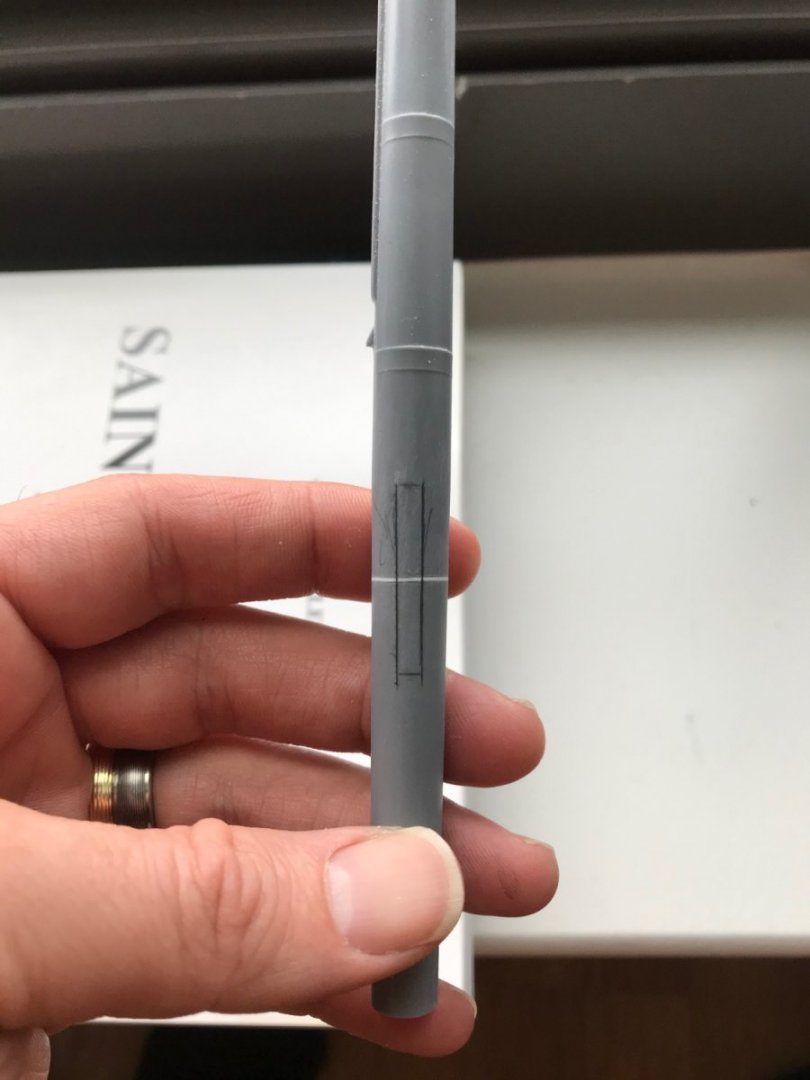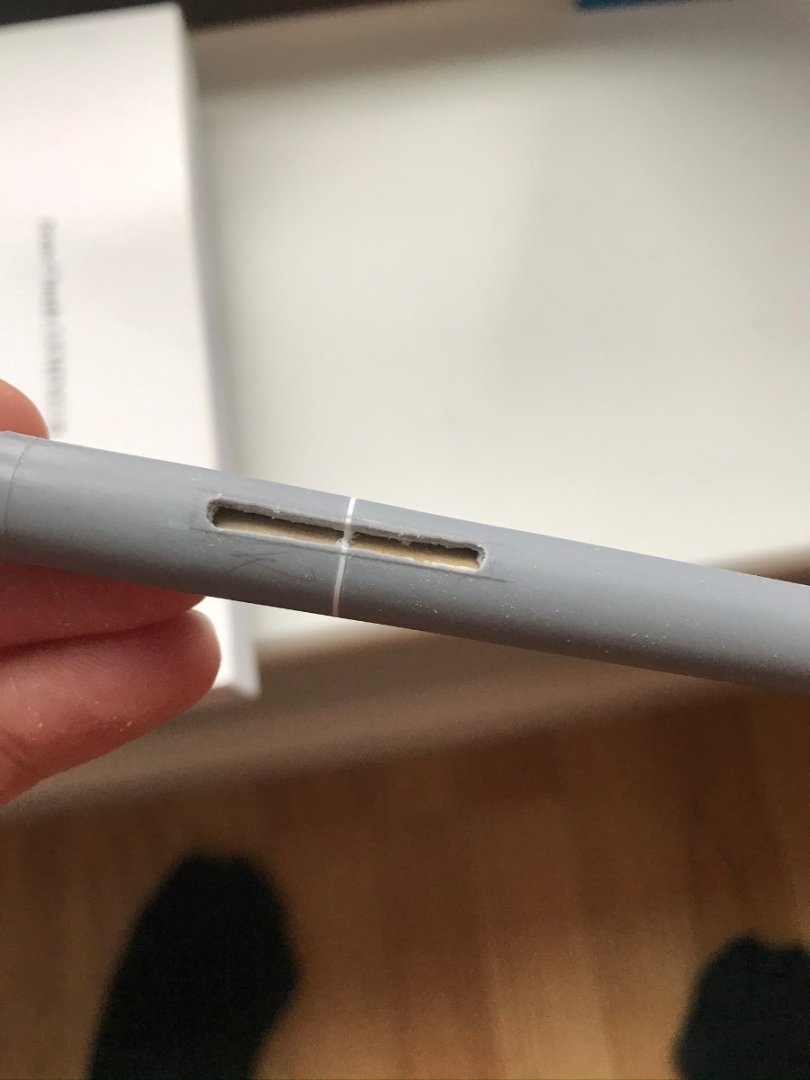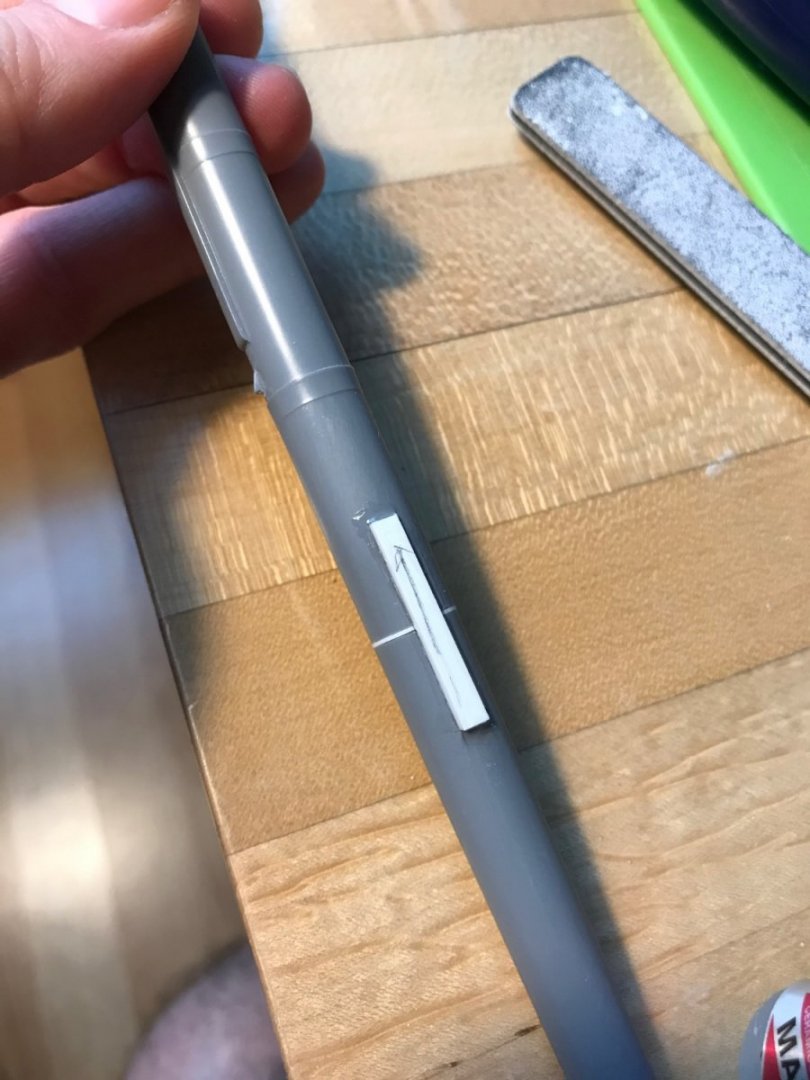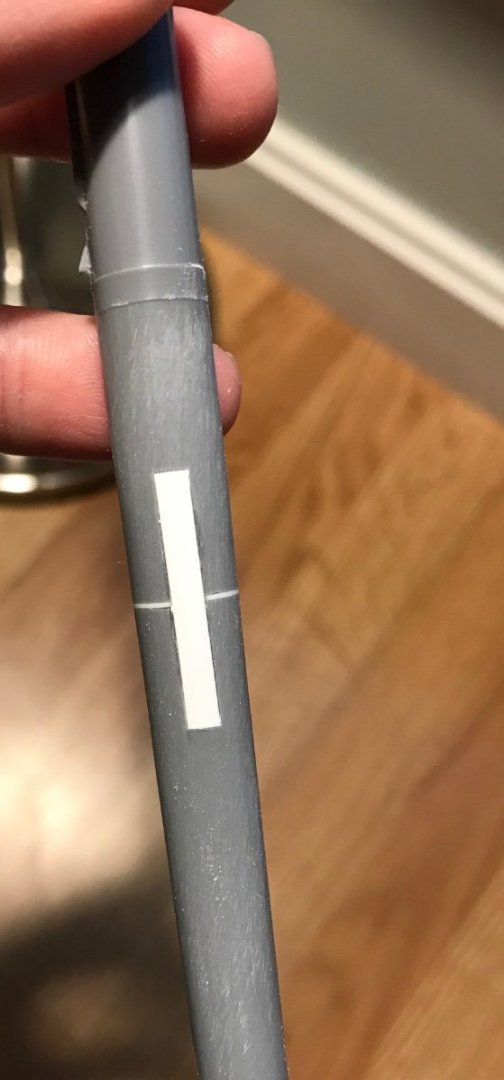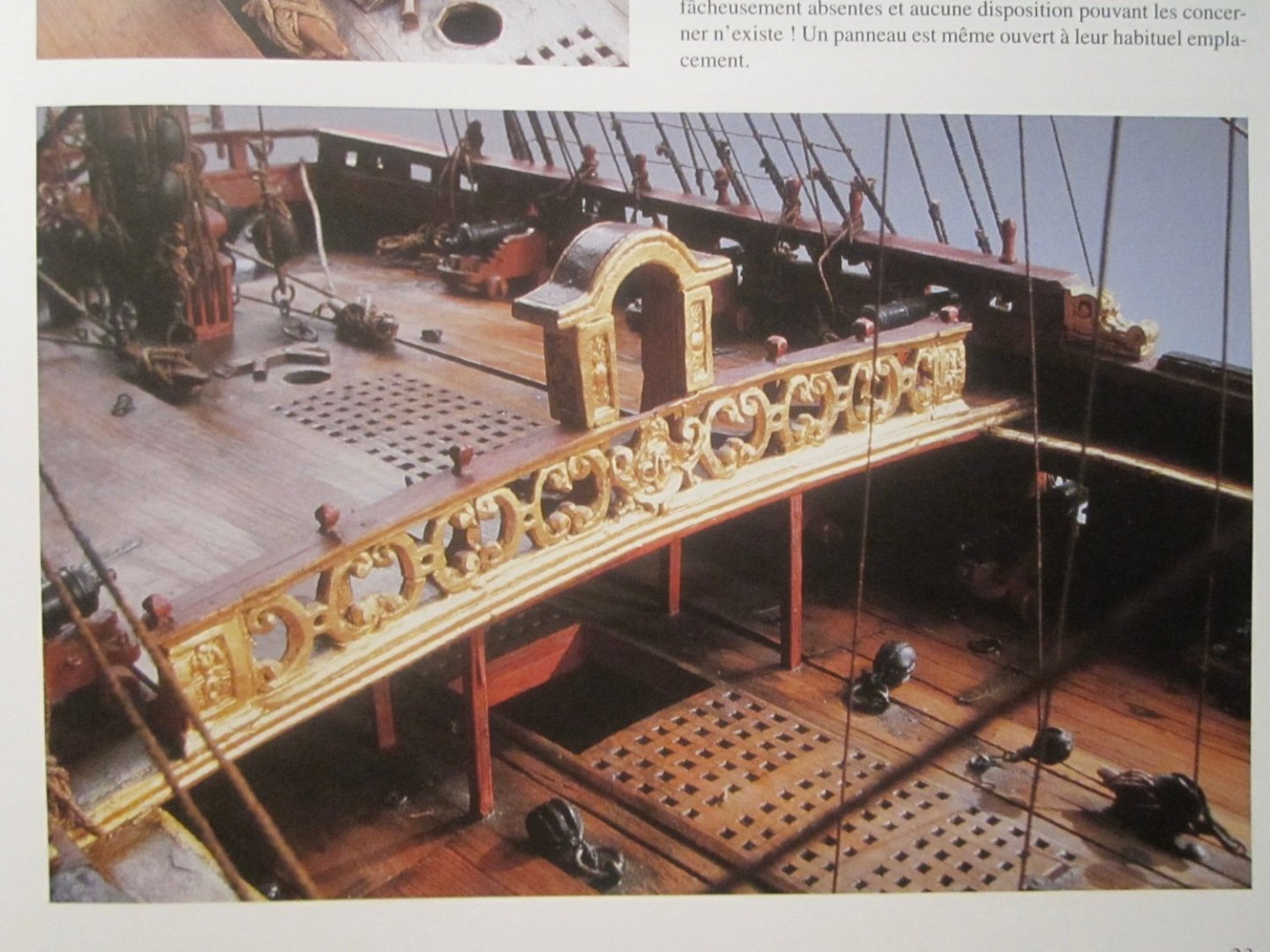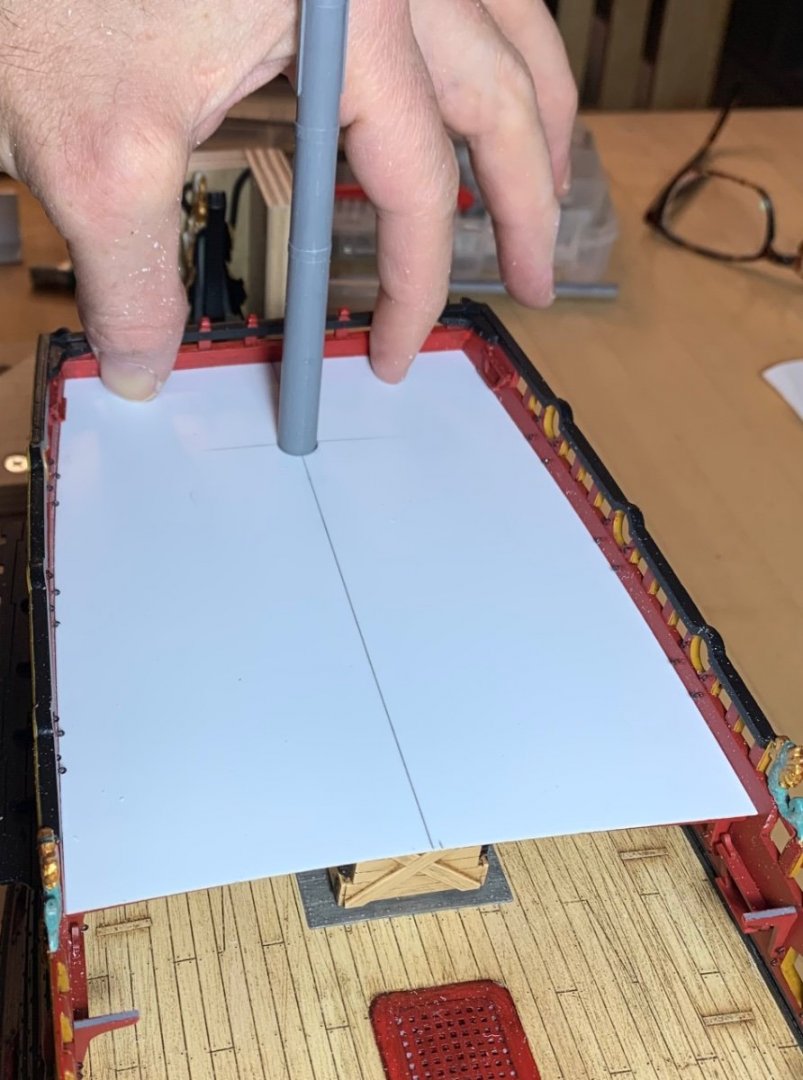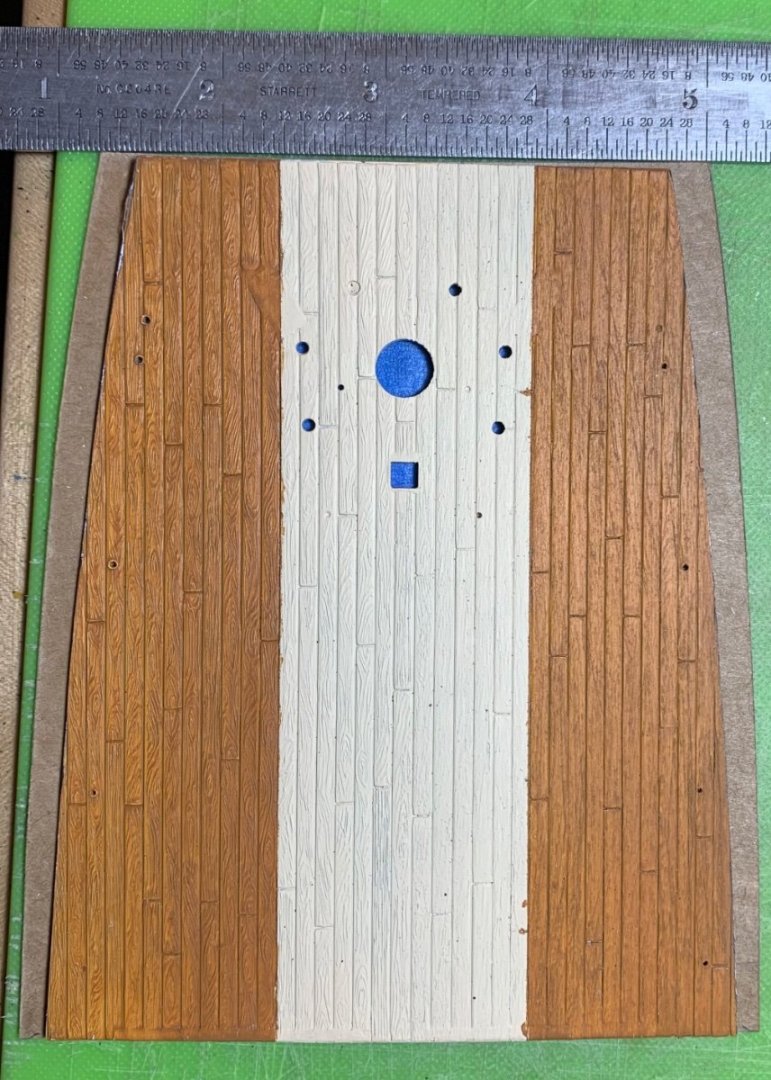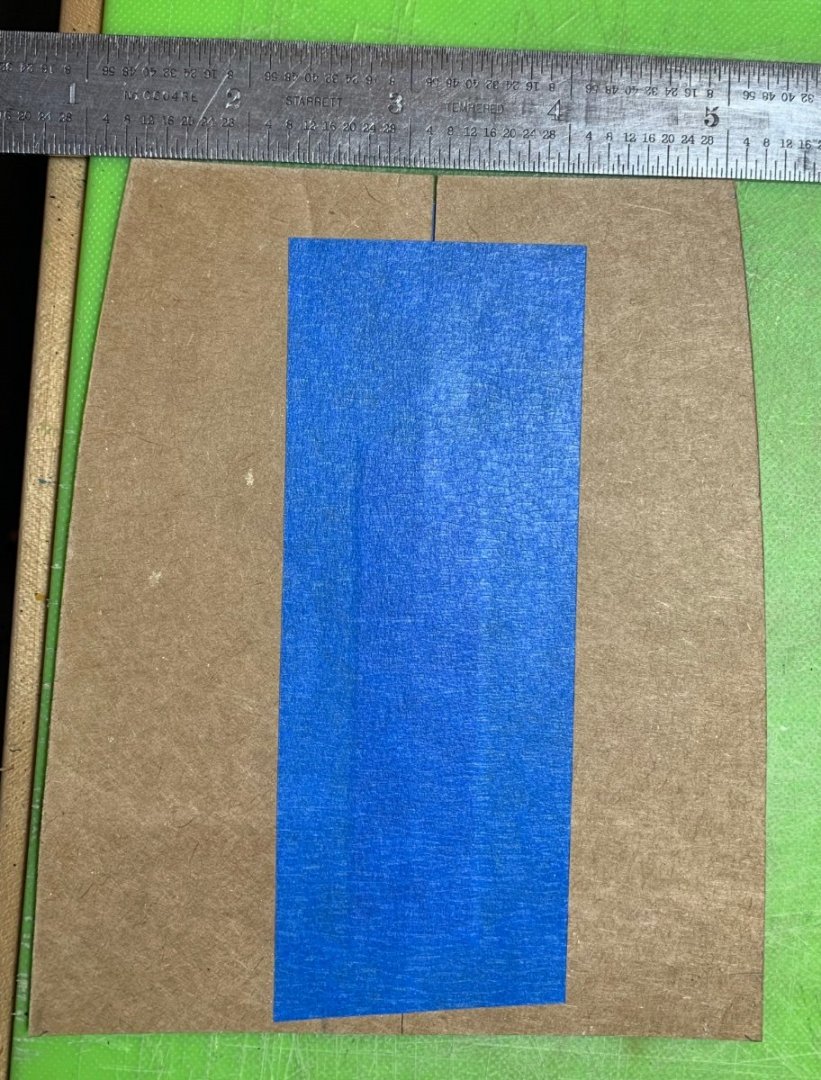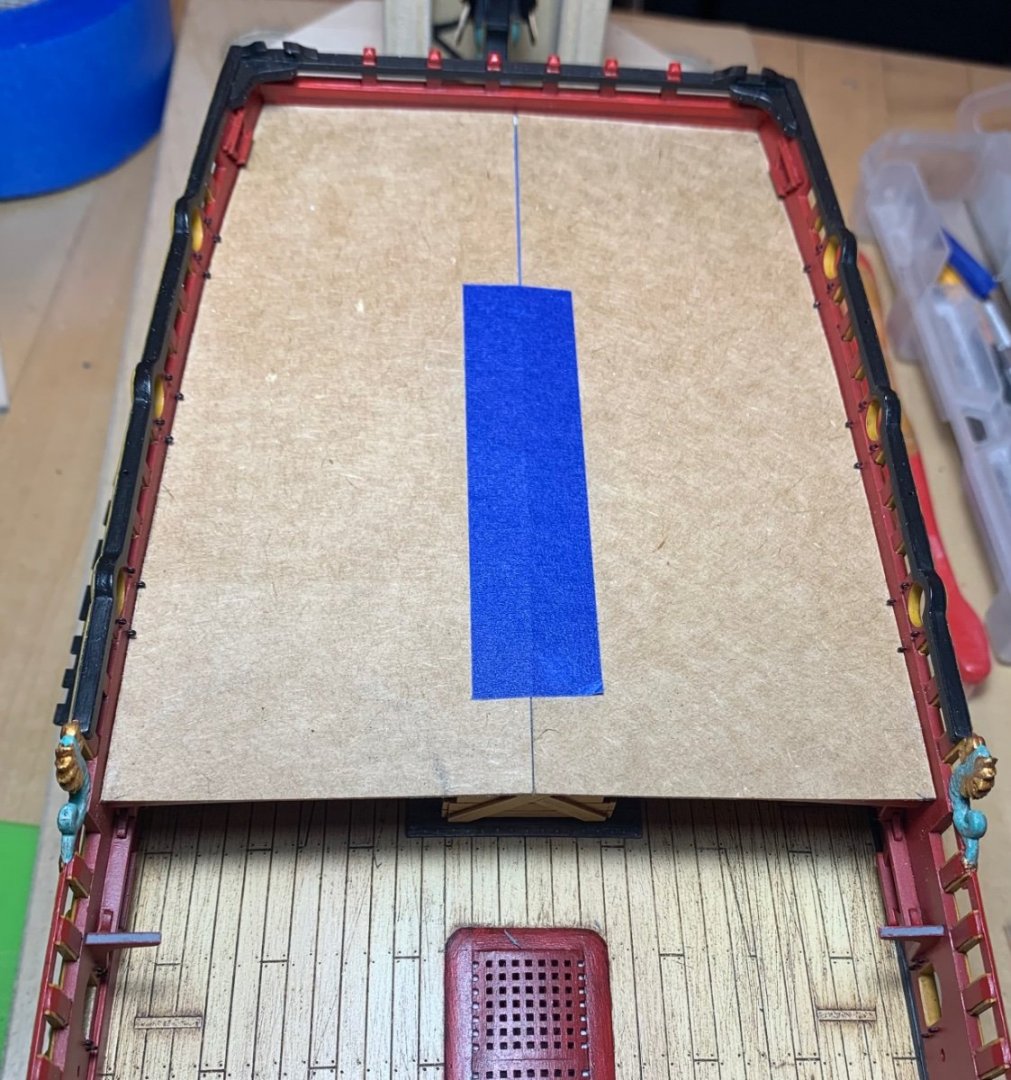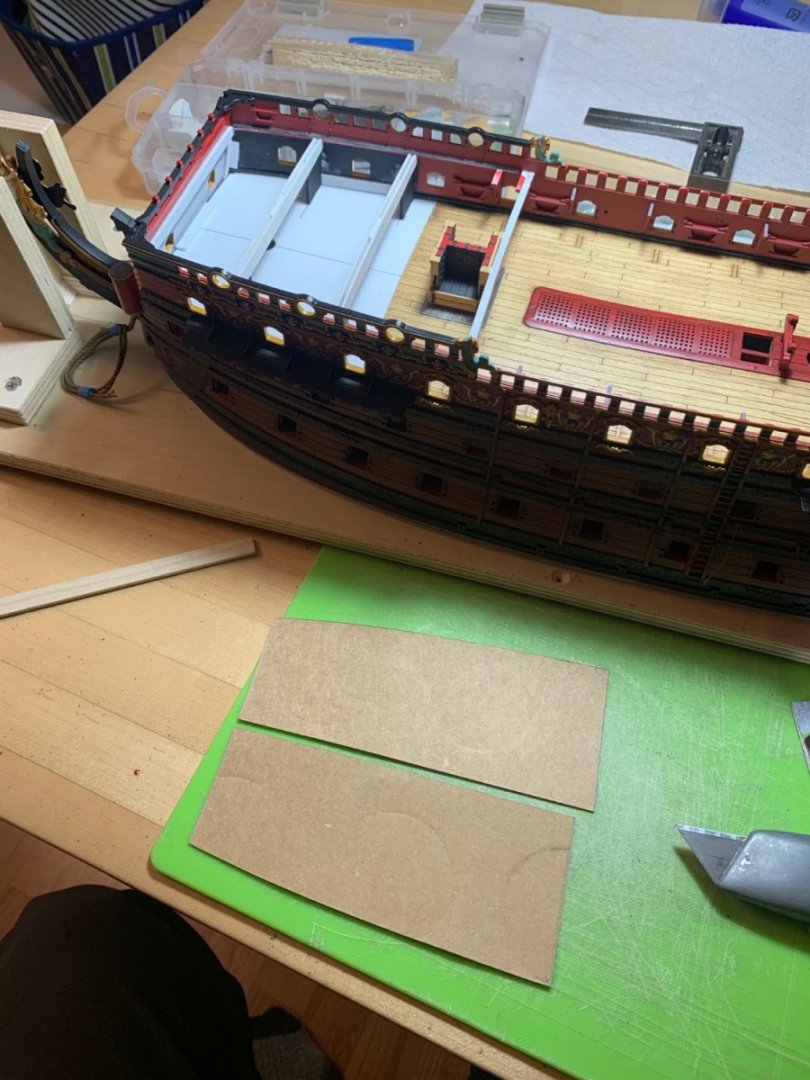-
Posts
3,308 -
Joined
-
Last visited
Content Type
Profiles
Forums
Gallery
Events
Everything posted by Hubac's Historian
-
Thank you, Ian! Yes, I do have RC Anderson, and also James Lees. Those two, together with the SP monograph should enable me to map out the particularities of French practice.
- 2,699 replies
-
- heller
- soleil royal
-
(and 9 more)
Tagged with:
-
Trust me, Kevin - there are bodies buried all over this model; I’ve just gotten better at disguising their appearance, or better - turning mistakes into features. Just look back to when I nearly cut clear-through my mainmast at deck level because I fell asleep at the wheel, so to speak. First, I filled the kerf with a piece of styrene sheet, but then I needed to mortise a dutchman to bring strength back to the mast: I sometimes am tempted to have a side project, but I know myself too well - I won’t finish anything. What I like to do is jump around within the model, and make mini- models out of certain aspects of the build just to keep my interest high. The stove is a good example of that - it didn’t need to be nearly as detailed as it ended up being. In the near future, the f’ocsle capstan will be fun bit of scratch.
- 2,699 replies
-
- heller
- soleil royal
-
(and 9 more)
Tagged with:
-
I suppose I shouldn’t be surprised that you are still hooping, Bill, with you being a native Kentuckian; the bluegrass tradition runs strong through your veins! I had to stop competitively playing the greatest game ever invented, at 42, when I had my hip replaced. I still love to shoot the ball, though. In fact, shooting a basketball is a lot like shooting a Kentucky rifle; you have to be absolutely locked-in, in the moment, to be any good at it. Thank you for asking about Dad. Yes, he has settled-in really well at the new place. He has made friends, and it’s a very comfortable and up-lifting place. The food is really, pretty good and varied. And, so far, keeping his dog has not been the issue I feared it would; I was imagining her sneaking out of the apartment and running crazy through the halls, bolting past unsteady seniors, etc. We got him there, just in-time. On a basic conversational level, he still seems fine, but he is increasingly incapable of holding onto any new information, and he quickly becomes confused. He seems much more contented than he has for a long while, now, so that’s all that really matters. As always, thank you for your thoughts and for looking in.
- 2,699 replies
-
- heller
- soleil royal
-
(and 9 more)
Tagged with:
-
Personally, I consider it a good thing to be confused with Kevin, so no worries there! Thank you, Bill! Lately, I feel as though I will never finish painting this last bulwark, but the devil’s in the details, so I will laboriously slog-on. I am similarly inspired by your rigging efforts on the Vic, as to do it right is a true exercise in patience and perseverance. I am sorry I don’t have much to contribute, there, as I am a novice to rigging, myself.
- 2,699 replies
-
- heller
- soleil royal
-
(and 9 more)
Tagged with:
-
That walnut ink is magic, as far as I’m concerned. Your deck sample has a subtly weathered appearance that I find very pleasing.
- 444 replies
-
- Cutty Sark
- Revell
-
(and 2 more)
Tagged with:
-
I agree with all above - this really came out very well. I really like the wake effect at that scale. Very well done!
- 179 replies
-
- hatsuzakura
- pit road
-
(and 2 more)
Tagged with:
-
Chuck, do you use any kind of sealer before your color coats - thinned shellac, or something like that?
- 1,784 replies
-
- winchelsea
- Syren Ship Model Company
-
(and 1 more)
Tagged with:
-
Hi George - I hope all is well, and I would also love to see an update on this project. One of my favorite things about this model is the way that you represented the nailing, above the waterline; at scale, this just looks fantastic! BTW, in the interim, since last speaking about this subject - I have come to the conclusion that a forecastle capstan is, indeed, likely. I am basing my observation on the allowance made, for such, on the Louis Quinze model at the Musee: The capstan pawls are clearly evident, as is the hole in the deck for the drum. Admittedly, the inclusion of gratings without coamings is curious.
- 22 replies
-
- royal louis
- heller
-
(and 1 more)
Tagged with:
-
EJ, this is all off to a smashing start! I have really enjoyed watching your skill progression, from one build to the next, as you are never daunted by the opportunity to try something new, and you always finish with a model that is way better than the sum of it's parts. I'll be following with great interest!
-
As long as it isn't eye-poking, then we are headed in the right direction, me hopes.
- 2,699 replies
-
- heller
- soleil royal
-
(and 9 more)
Tagged with:
-
- 2,699 replies
-
- heller
- soleil royal
-
(and 9 more)
Tagged with:
-
Making new decks was necessitated by the extensions I placed to either side of the stem, which made the whole hull wide enough to include the missing sixth stern light. Incredibly (considering how many I took), I don’t have pictures of this plastic surgery on my phone still, from before priming, but you can still faintly make out the join-line 5/16” to the left of the stem. It runs right through the center of the near hawse hole: In fact, you can see how I filled-in the outboard stock hawse hole because it was now too far outboard. This was THE critical stage of the build because if it didn’t work convincingly, there wasn’t going to be much sense in moving forward. It was tricky, but it worked out better than I could have hoped, at the time. Anyway, what I was illustrating in the post above is just how much wider my new forecastle deck is, as opposed to the stock deck. And, if one is going to go to the trouble of making new decks, one might as well include a ton of more realistic detail. The timbering of the Heller decks is all wrong. I mean, for an out-of-the-box build, it’s fine, but in real practice the deck strakes would not have been parallel strakes that disappear into thin points at the margin; they’d be a fixed number of strakes that tapered from wide, at mid-ships, to narrower at the ends. I mapped out reasonable beam-locations, based on the deck openings; a realistic plank-butt shift; I included the scarfed, wider binding strakes; and I made cambered, instead of flat gratings. The stock gratings, which I used anyway, were now too narrow for my wider deck, so I deliberately made wider hatch coamings to influence the overall perception of scale, since the hatches and coamings would all be painted red; like many details on this bash, it isn’t exactly right, but it gives a more correct impression than the stock kit parts do. As for the new rigging guide, I haven’t studied it too closely because I don’t think I will be referencing it much.
- 2,699 replies
-
- heller
- soleil royal
-
(and 9 more)
Tagged with:
-
Thank you for the new instruction notes on rigging, Bill. You will see what I mean, eventually, about the single-post belay points. The process of making new decks is somewhat complicated by the fact that the centerline reference for the line of the masts does not neatly correspond with the width of the decks, at any given point, owing to the hull distortion discussed earlier. I make perfectly scribed half-patterns that correspond with the centerline of the masts: Above, the deck length is over-long for the time-being. Below, you can see how adding width extensions to the beakhead bulkhead resulted in a slight concavity that the deck must scribe to: Here, you can get a sense for just to what degree the early bow extensions increased the width of the hull: I use the stock decking to find the new scribe for the bulwarks, since the profiles are reasonably close; it only takes a little re-shaping to get the pattern right. I then transfer that profile to my cardboard and refine each half until it is a perfect scribe. As a side-note, the painting on that kit deck was part of a tech demonstration I did for the 2018 NorthEast Joint Clubs demonstration. I was showing how I wash and weather these two different base coats to arrive at the effect seen on the model. The darker brown would be what the pristine, freshly painted deadworks would ordinarily look like. The color is referred to, by the French as Ventre de Biche, or belly of the doe, in English. The lighter tan is the base-coat for my decks. Here is the new deck, before layout and scribing, with the foremast properly located: There will still be a mast plate and mast collar to follow, but the opening for the mast is, for now, as tight as it needs to be. Little by little, we are getting there! Thank you for the likes, comments and for looking in. More to follow…
- 2,699 replies
-
- heller
- soleil royal
-
(and 9 more)
Tagged with:
-
I appreciate the thought, there, Bill. It’s difficult to watch someone’s mind disappear, yet he seems happier in his new home than he has in years. I’ll follow your SR build whenever you get around to starting it. As with Victory, the rigging is the daunting aspect. RC Anderson is the best resource for figuring out all of that, but the biggest question is where, exactly, all the belay points should be. I’m not convinced that Heller’s series of individual belaying posts is accurate. It seems more likely that running lines were sheaved through a block, at deck level, and then belayed to either kevels on the bulwarks or cleats on the deck. The St. Philippe monograph is also an excellent resource for figuring all of this out, but the rigging plans require close study to understand what is what. Fortunately, I can kick that can down the road just a little further, as I still have plenty of exterior structure to deal with.
- 2,699 replies
-
- heller
- soleil royal
-
(and 9 more)
Tagged with:
-
Welcome, No Idea! Thank you for taking the time to read through my build. It was a slow-starting project, but now things are starting to come together.
- 2,699 replies
-
- heller
- soleil royal
-
(and 9 more)
Tagged with:
About us
Modelshipworld - Advancing Ship Modeling through Research
SSL Secured
Your security is important for us so this Website is SSL-Secured
NRG Mailing Address
Nautical Research Guild
237 South Lincoln Street
Westmont IL, 60559-1917
Model Ship World ® and the MSW logo are Registered Trademarks, and belong to the Nautical Research Guild (United States Patent and Trademark Office: No. 6,929,264 & No. 6,929,274, registered Dec. 20, 2022)
Helpful Links
About the NRG
If you enjoy building ship models that are historically accurate as well as beautiful, then The Nautical Research Guild (NRG) is just right for you.
The Guild is a non-profit educational organization whose mission is to “Advance Ship Modeling Through Research”. We provide support to our members in their efforts to raise the quality of their model ships.
The Nautical Research Guild has published our world-renowned quarterly magazine, The Nautical Research Journal, since 1955. The pages of the Journal are full of articles by accomplished ship modelers who show you how they create those exquisite details on their models, and by maritime historians who show you the correct details to build. The Journal is available in both print and digital editions. Go to the NRG web site (www.thenrg.org) to download a complimentary digital copy of the Journal. The NRG also publishes plan sets, books and compilations of back issues of the Journal and the former Ships in Scale and Model Ship Builder magazines.




